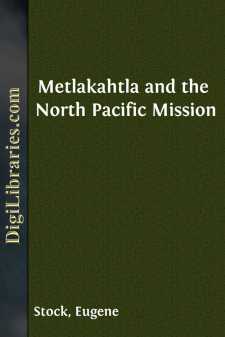Categories
- Antiques & Collectibles 13
- Architecture 36
- Art 48
- Bibles 22
- Biography & Autobiography 813
- Body, Mind & Spirit 142
- Business & Economics 28
- Children's Books 15
- Children's Fiction 12
- Computers 4
- Cooking 94
- Crafts & Hobbies 4
- Drama 346
- Education 46
- Family & Relationships 57
- Fiction 11828
- Games 19
- Gardening 17
- Health & Fitness 34
- History 1377
- House & Home 1
- Humor 147
- Juvenile Fiction 1873
- Juvenile Nonfiction 202
- Language Arts & Disciplines 88
- Law 16
- Literary Collections 686
- Literary Criticism 179
- Mathematics 13
- Medical 41
- Music 40
- Nature 179
- Non-Classifiable 1768
- Performing Arts 7
- Periodicals 1453
- Philosophy 64
- Photography 2
- Poetry 896
- Political Science 203
- Psychology 42
- Reference 154
- Religion 513
- Science 126
- Self-Help 84
- Social Science 81
- Sports & Recreation 34
- Study Aids 3
- Technology & Engineering 59
- Transportation 23
- Travel 463
- True Crime 29
Metlakahtla and the North Pacific Mission
by: Eugene Stock
Description:
Excerpt
THE FIELD OF LABOUR
British Columbia, now forming part of "The Dominion of Canada," includes within its limits several islands, of which Vancouver's is the principal, and that part of the continent of North America, west of the Rocky Mountains and east of Alaska, which is included between the 49 deg. and the 60 deg. parallels of north latitude.
English connection with this part of the world may be said to date from an exploratory voyage made by Captain Cook in 1776, when he landed at Friendly Cove and Nootka Sound, and took possession of them in the name of his sovereign. He supposed at the time that these places were on the mainland, and it was not until Captain Vancouver, an officer in the English Navy, was despatched in 1792 to the Pacific, that he discovered that Nootka and Friendly Cove were on the west side of the island which now bears his name, and which is sometimes spoken of as the gem of the Pacific.
In 1793, Alexander Mackenzie, one of the most enterprising pioneers in the employment of the North-West Fur Company, who had already discovered the mighty river since named after him, crossed the Rocky Mountains, and pushed his way westward, until he stood on the shores of the Pacific. Some years later, in 1806, Mr. Simon Frazer, another employe of the same Company, gave his name to the great river that drains British Columbia, and established the first trading post in those parts. After the amalgamation of this Company with the Hudson's Bay Company, other posts were established, such as Fort Rupert, on Vancouver's Island, and Fort Simpson, on the borders of Alaska, then belonging to Russia, but subsequently sold by her to the United States.
In 1858, the discovery of gold in the basin of the Fraser river, on the mainland, attracted a large number of gold-diggers from California, and among them a considerable body of Chinese. To maintain order among a motley population of lawless habits, British Columbia was formed into a colony, with its capital at Victoria, on Vancouver's Island.
Official returns, made a few years ago, gave the number of Indians in British Columbia as 31,520, distributed over the islands and mainland. They belong to several distinct families or nations, speaking distinct languages, subdivided into a multitude of tribes speaking different dialects of their own. Thus the Hydahs of Queen Charlotte's Islands are altogether distinct from the Indians of Vancouver's Island, where, indeed, those on the east coast are distinct from those on the west. Again, on the mainland, the Indians on the sea-board are distinct from the Indians of the interior, from whom they are divided by the Cascade range of mountains. These inland Indians are of more robust and athletic frame, and are altogether a more vigorous race.
Among the coast tribes, however, there are great differences, those to the north being far superior to those in the south. Those who know the Indians well declare that it would be impossible to find anywhere finer looking men than the Hydahs, Tsimsheans, and some of the Alaskan tribes....


